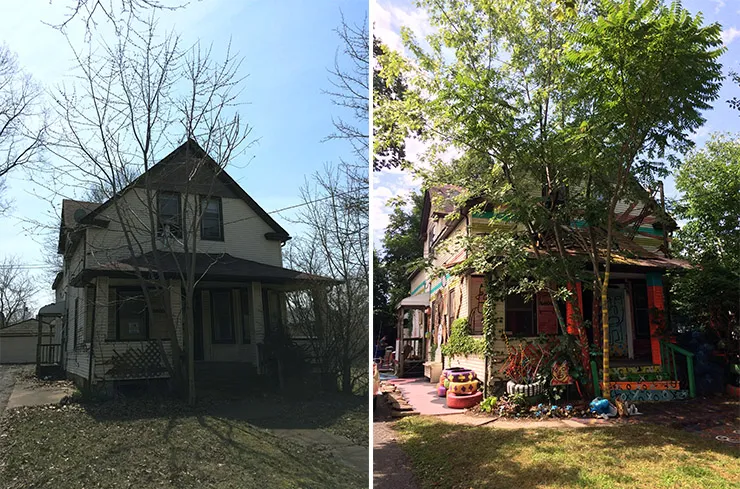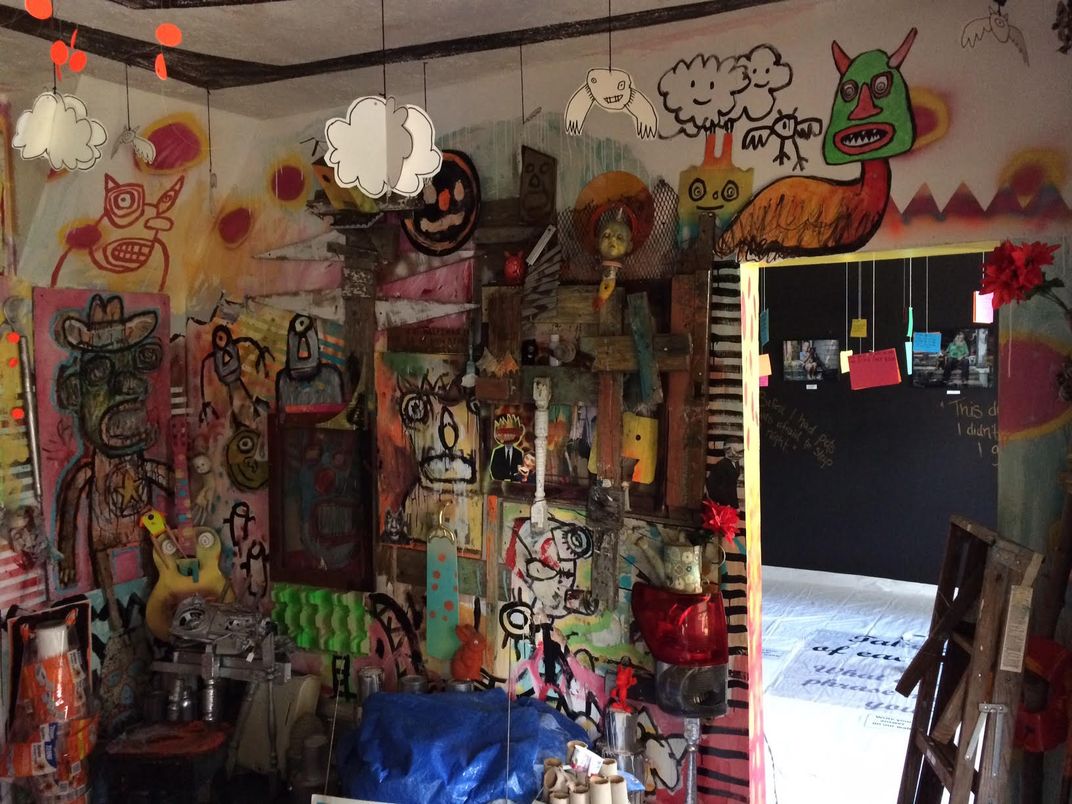Vibrant Art Installations Infuse New Life into Abandoned Houses in This Cleveland Neighborhood
Hit hard by the recession, Slavic Village is slowly making a comeback with the help of artists and neighborhood groups
/https://tf-cmsv2-smithsonianmag-media.s3.amazonaws.com/filer/32/cd/32cd9ec9-5a6d-48f0-b7e7-e92acd946dec/21751460_494960607539246_6422440484188764192_n.jpg)
A symphony of hammers, saws and chisels pierce the early-morning silence that had blanketed Slavic Village, a neighborhood tucked away on Cleveland’s south side. As daylight creeps in, a team of artists is busily creating a series of art installations that will transform several vacant houses that pockmark the neighborhood. Called Rooms to Let: CLE, the fifth-annual event unites artists and neighbors to achieve one common goal: to help reinvigorate a community that only a few years prior had been struggling to survive.
To fully appreciate the scope of such a massive project, one must first understand the history of Slavic Village. For decades, the working-class neighborhood served as home base for the city’s extensive Polish and Czech immigrant populations, but in the late 2000s everything radically changed as the Great Recession swept the nation—and Slavic Village got hit particularly hard. Of the top 500 U.S. zip codes faced with foreclosure filings at the time, CNN Money ranked Slavic Village at the very top of its list.
Now, a decade later, the community and city continue to strive towards revitalizing and breathing new life into the streets of Slavic Village. One person in particular who has seen the changes first hand is Chris Alvarado, executive director of Slavic Village Development, a non-profit organization responsible for overseeing the redevelopment of the nearly five-square-mile neighborhood. It's also the group responsible for making Rooms to Let a reality.
“During the peak of the recession, Slavic Village had the highest number of foreclosures of any zip code in the entire country, resulting in a high concentration of vacant and abandoned houses that needed to either be rehabbed or demolished,” Alvarado tells Smithsonian.com. “[Rooms to Let] was really a reaction on our part to this tsunami of vacant, abandoned homes. Instead of running away from these issues, we chose to use art as way to highlight not just the housing crisis itself, but also to provide a positive reaction to a negative experience.”
To do this, Rooms to Let curators put a callout earlier this year for artists to come and create temporary works of art inside some of the neighborhood’s vacant homes and overgrown lots. Over the past week, more than 90 artists have come to Slavic Village to create their pieces while also working side by side with residents and volunteers to do home repair and increase curb appeal of occupied houses in the area.

“We specifically look for houses that are scheduled for demolition, since we want to give the artists a lot of leeway when it comes to what they do,” Alvarado says. “It’s not just a matter of painting walls or hanging art, we encourage the artists to make art out of the homes. They have a great deal of latitude and can build new structures off of the home [if they want].”
Organizers are also working with the Better Block Foundation, a nonprofit that helps to empower and equip communities with the tools and knowledge needed to revitalize neighborhoods, by installing Wikiblocks, computer-cut plywood benches, chairs and planters.
And while Alvarado admits that some residents have been hesitant when it comes to change in the neighborhood, overall most have been happy with the contributions of Rooms to Let.
One such neighbor who has experienced this as both an artist and Slavic Village resident is Scott Pickering. For the past 20 years, Pickering has called the neighborhood home, first renting and eventually buying a house. He’s also served as a curator and artist for Rooms to Let since its inception, and says he looks to the neighborhood to inspire and inform his artwork.

“A lot of the work I do, especially in the summer, is outdoors, since I move my studio to my backyard,” Pickering tells Smithsonian.com. “So I’m completely informed by the sounds of the neighborhood, from kids playing to dogs barking to police sirens. In some way these things find their way into my art.”
For this year’s installation, Pickering is working on a solo installation inside what was once a duplex’s kitchen. Called “The Room of Lunacy,” he’s partnered with DayGlo Color Corp., the world’s largest manufacturer of fluorescent pigments that just so happens to be based out of Cleveland, to create a neon wonderland of painted imagery.
“[For this piece], I’m trying to create a new version of Slavic Village but also retain the historic value of the neighborhood,” he says. “It’s completely immersive, and I’ve painted everything down to the ceiling, walls and floor. I’m also recycling some of the debris that I’ve found inside the property and incorporating it into a 3D collage, if you will. It’s high energy.”
Rooms to Let will be held July 28 and 29 in Cleveland. In addition to the art installations, live music, interactive art and performance art are also scheduled.
Planning Your Next Trip?
Explore great travel deals
Smithsonian magazine participates in affiliate link advertising programs. If you purchase an item through these links, we receive a commission.